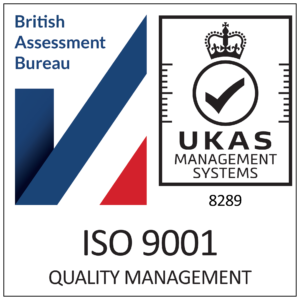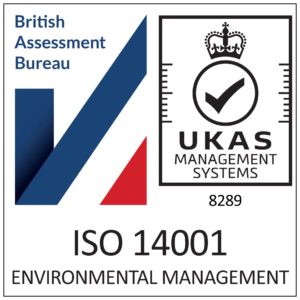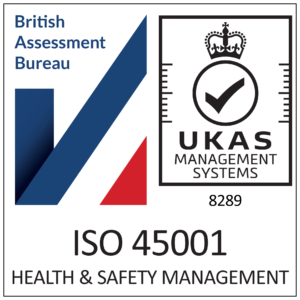
Maintaining a Safe and Healthy Work Environment
Introduction
Importance of a safe and healthy work environment
A safe and healthy work environment is crucial for the overall well-being and productivity of employees. It ensures that employees feel valued and cared for, leading to increased job satisfaction and motivation. Additionally, a safe work environment reduces the risk of accidents and injuries, promoting the physical and mental health of employees. By prioritizing safety and health, organizations can create a positive work culture that fosters creativity, innovation, and collaboration. Moreover, a safe and healthy work environment helps attract and retain top talent, as employees are more likely to choose companies that prioritize their well-being. Therefore, it is essential for employers to recognize the importance of a safe and healthy work environment and take proactive measures to maintain it.
Benefits of maintaining a safe and healthy work environment
Maintaining a safe and healthy work environment offers numerous benefits for both employees and employers. Firstly, it promotes the physical well-being of employees, reducing the risk of accidents, injuries, and illnesses. This not only improves the overall morale and productivity of the workforce but also reduces absenteeism and healthcare costs. Additionally, a safe and healthy work environment fosters a positive and supportive culture, where employees feel valued and motivated to perform their best. This leads to increased job satisfaction, higher employee retention rates, and ultimately, better business outcomes. Furthermore, a commitment to maintaining a safe and healthy work environment enhances the reputation of the company, attracting top talent and building trust with clients and customers. Overall, investing in a safe and healthy work environment is a win-win situation, benefiting both the individuals and the organization as a whole.
Overview of the article
In this article, we will explore the importance of maintaining a safe and healthy work environment. A safe and healthy work environment is crucial for the well-being and productivity of employees. It not only reduces the risk of accidents and injuries but also promotes a positive work culture. By implementing safety measures, such as providing adequate training and equipment, employers can ensure the physical and mental well-being of their employees. Additionally, a healthy work environment encourages open communication, teamwork, and employee engagement. In this article, we will discuss various strategies and best practices for maintaining a safe and healthy work environment, including risk assessment, hazard control, and employee wellness programs.
Identifying Hazards
Types of hazards in the workplace
In the workplace, there are various types of hazards that can pose risks to the health and safety of employees. These hazards can be categorized into physical hazards, such as noise, radiation, and temperature extremes; chemical hazards, including exposure to toxic substances and hazardous chemicals; biological hazards, such as viruses, bacteria, and fungi; and ergonomic hazards, which involve repetitive motions, poor posture, and improper lifting techniques. It is crucial for employers to identify and address these hazards to maintain a safe and healthy work environment for their employees.
Methods for identifying hazards
Methods for identifying hazards involve conducting regular inspections of the workplace, analyzing incident reports, and actively engaging employees in the process. Regular inspections help identify potential hazards such as faulty equipment, unsafe working conditions, or improper storage of hazardous materials. Incident reports provide valuable information about past accidents or near misses, which can be used to identify recurring hazards. By involving employees in the hazard identification process, organizations can tap into their firsthand knowledge and experience to identify potential risks and hazards that may otherwise go unnoticed. This collaborative approach not only enhances the accuracy of hazard identification but also promotes a culture of safety and accountability within the workplace.
Importance of hazard identification
The importance of hazard identification cannot be overstated when it comes to maintaining a safe and healthy work environment. Identifying potential hazards is the first step in preventing accidents, injuries, and illnesses in the workplace. By proactively identifying and addressing hazards, employers can create a work environment that prioritizes the well-being of their employees. Hazard identification involves conducting thorough risk assessments, inspecting the workplace for potential dangers, and involving employees in the process. It is crucial for employers to regularly review and update their hazard identification procedures to ensure ongoing safety and compliance with regulations. Ultimately, a strong focus on hazard identification sets the foundation for a safe and healthy work environment where employees can thrive.
Risk Assessment
Definition of risk assessment
A risk assessment is a systematic process of evaluating potential hazards and identifying measures to control or minimize those hazards in order to ensure a safe and healthy work environment. It involves identifying and assessing risks, determining the likelihood and severity of potential harm, and implementing appropriate control measures. By conducting a risk assessment, organizations can proactively identify and address potential risks, thereby reducing the likelihood of accidents, injuries, and illnesses in the workplace.
Steps involved in conducting a risk assessment
Conducting a risk assessment is a crucial step in maintaining a safe and healthy work environment. It involves identifying potential hazards, evaluating the risks associated with them, and implementing appropriate control measures to minimize or eliminate those risks. The first step in this process is to gather information about the workplace, including its layout, equipment, and processes. This information helps in identifying potential hazards and understanding how they may impact the employees. Once the hazards are identified, the next step is to assess the risks associated with them. This involves evaluating the likelihood and severity of each hazard and determining the level of risk it poses. Based on the risk assessment, control measures are then implemented to reduce or eliminate the identified hazards. These measures may include engineering controls, administrative controls, or personal protective equipment. Regular reviews and updates of the risk assessment are also necessary to ensure the effectiveness of the control measures and to address any new hazards that may arise. By following these steps, organizations can create a safe and healthy work environment for their employees.
Tools and techniques for risk assessment
In order to maintain a safe and healthy work environment, it is essential to utilize various tools and techniques for risk assessment. These tools help identify potential hazards and evaluate the level of risk associated with them. One commonly used tool is the risk assessment matrix, which categorizes risks based on their likelihood and severity. Additionally, techniques such as job hazard analysis and safety inspections can provide valuable insights into potential risks and help develop effective preventive measures. By employing these tools and techniques, organizations can proactively identify and mitigate workplace hazards, ensuring the well-being of their employees and creating a conducive work environment.
Preventing Accidents and Injuries
Importance of accident prevention
Accident prevention is of utmost importance in maintaining a safe and healthy work environment. By implementing effective safety measures and protocols, organizations can significantly reduce the risk of accidents and injuries. This not only protects the well-being of employees but also enhances productivity and morale. Additionally, accident prevention demonstrates a commitment to the welfare of workers, which can help attract and retain top talent. Overall, prioritizing accident prevention is essential for creating a workplace that promotes the health, safety, and success of all individuals involved.
Safety measures and protocols
In order to ensure a safe and healthy work environment, it is essential to implement and follow proper safety measures and protocols. This includes conducting regular safety inspections, providing necessary safety equipment and training, and enforcing strict adherence to safety guidelines. By doing so, we can minimize the risk of accidents and injuries, and create an atmosphere where employees feel secure and protected. Additionally, it is important to regularly communicate and educate employees about safety procedures, encouraging them to report any potential hazards or concerns. By prioritizing safety measures and protocols, we can foster a culture of safety and well-being in the workplace.
Training and education for accident prevention
Training and education play a crucial role in accident prevention and maintaining a safe and healthy work environment. By providing employees with the necessary knowledge and skills, organizations can empower them to identify potential hazards, take appropriate safety measures, and respond effectively in case of emergencies. Regular training sessions not only help in raising awareness about workplace safety protocols but also ensure that employees are up-to-date with the latest industry standards and best practices. Additionally, ongoing education programs can further enhance employees’ understanding of safety procedures and equip them with the tools to mitigate risks. By investing in comprehensive training and education initiatives, organizations demonstrate their commitment to prioritizing the well-being of their workforce and creating a culture of safety.
Promoting Health and Well-being
Importance of promoting health in the workplace
Promoting health in the workplace is of utmost importance for maintaining a safe and productive work environment. When employees are healthy, they are more likely to be engaged, motivated, and focused on their work. Additionally, a healthy workforce can result in reduced absenteeism and increased productivity. Employers can promote health in the workplace by implementing wellness programs, providing access to healthy food options, and encouraging regular exercise. By prioritizing the health and well-being of employees, organizations can create a positive work culture and enhance overall productivity.
Wellness programs and initiatives
Wellness programs and initiatives play a crucial role in maintaining a safe and healthy work environment. These programs are designed to promote employee well-being and foster a positive workplace culture. By offering a variety of wellness activities, such as fitness classes, mental health support, and healthy eating initiatives, organizations can help employees improve their physical and mental health. Additionally, wellness programs can reduce workplace stress, increase productivity, and enhance employee engagement. Employers who prioritize wellness programs demonstrate their commitment to the well-being of their employees, ultimately creating a happier and more productive workforce.
Mental health support and resources
Mental health support and resources are essential for maintaining a safe and healthy work environment. Employers should prioritize the well-being of their employees by providing access to professional mental health support services, such as counseling or therapy. Additionally, it is important to promote a culture of openness and understanding, where employees feel comfortable discussing their mental health concerns without fear of judgment or stigma. By investing in mental health resources, organizations can ensure that their employees have the necessary support to cope with work-related stress and maintain their overall well-being.
Creating a Culture of Safety
Leadership’s role in creating a culture of safety
Leadership plays a crucial role in creating a culture of safety within the workplace. It is the responsibility of leaders to set the tone and establish clear expectations for safety practices. By demonstrating a commitment to safety, leaders inspire and motivate employees to prioritize their well-being. Effective leaders also ensure that safety protocols and procedures are implemented and followed consistently. They provide the necessary resources and support to maintain a safe and healthy work environment. Furthermore, leaders foster open communication channels, encouraging employees to report any safety concerns or incidents without fear of retaliation. Through their actions and attitudes, leaders shape the overall safety culture of the organization, influencing employee behavior and promoting a sense of trust and confidence in the workplace.
Employee engagement and participation
Employee engagement and participation play a crucial role in maintaining a safe and healthy work environment. When employees are actively engaged and involved in decision-making processes, they feel a sense of ownership and responsibility towards their workplace. This leads to increased commitment and motivation to ensure the well-being of themselves and their colleagues. Additionally, employee engagement fosters a culture of open communication and collaboration, allowing for the identification and resolution of potential safety hazards and health risks. By encouraging active participation and involvement, organizations can create a work environment where everyone feels valued and empowered to contribute to the overall safety and health of the workplace.
Recognition and rewards for safety
Recognition and rewards for safety play a crucial role in maintaining a safe and healthy work environment. By acknowledging and appreciating employees who prioritize safety, organizations can reinforce the importance of following safety protocols and encourage a culture of vigilance. Providing incentives, such as monetary rewards, public recognition, or additional time off, can motivate employees to actively participate in creating a safe workplace. Moreover, recognizing individuals or teams for their safety achievements not only boosts morale but also fosters a sense of pride and ownership in maintaining a secure work environment. Ultimately, a comprehensive recognition and rewards program can significantly contribute to the overall well-being and productivity of the workforce.
Next Steps
Creating and maintaining a safe and healthy work environment is an ongoing process that requires continuous effort and attention. To ensure the well-being of your employees and the success of your business, it is crucial to take the next steps towards implementing effective safety measures. One way to achieve this is by partnering with a professional facility management company like Premiserv. With their expertise in workplace safety, they can provide comprehensive solutions tailored to your specific needs. Take action now and visit https://premiserv.co.uk to learn more about how Premiserv can help you create a safe and healthy work environment for your employees. Don’t wait any longer – prioritize the safety and well-being of your workforce today.






